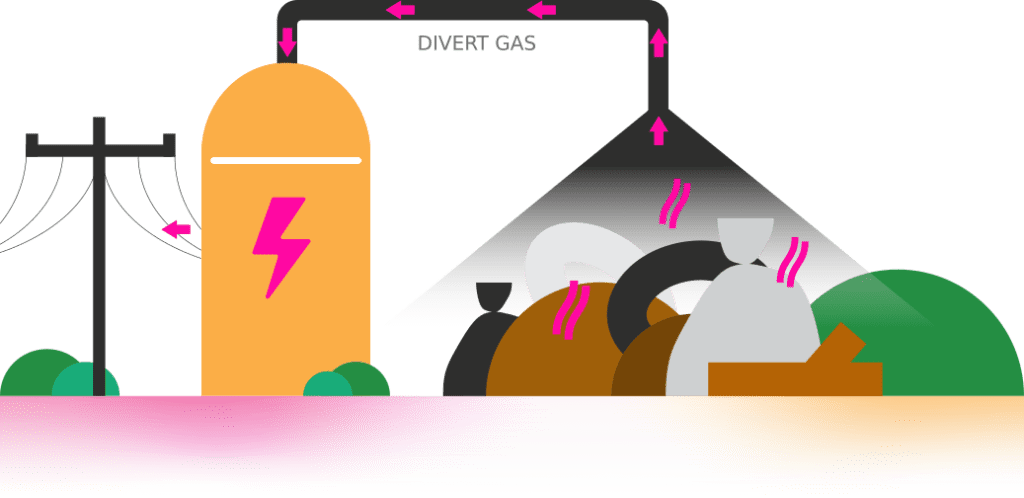The benefits of biogas
A Sustainability Journey, Electricity Providers, Gas Providers, Utilities
A Sustainability Journey, Electricity Providers, Gas Providers, Utilities
This is a sponsored article from SustainabilityTracker.com member GloBird Energy.
Now that GloBird Energy has been around for a few years and is an established business, we’re in the position to identify and put in place more projects and processes that fit with our preferred approach to energy retailing.
The reality of any business is that it takes time to build a solid foundation. No matter what your dreams may be, you need to remain viable so that you can pursue your philosophical and ideological missions. Meanwhile, a smaller company simply doesn’t have the luxury of margin for error that a multi-national does.
For us, that means taking things steadily one step at a time, although we’re constantly working on the next several steps, as it can take time to get everything in place before making the next move.
More energy from renewable sources
One of the things we’re always working on is how we can source more energy from renewable sources.
To that end, we’re very pleased to have completed a multi-year energy supply agreement with one of Australia’s largest biogas companies.
That alignment with a solid company (they have around 40 facilities currently operating) is a significant thing for GloBird, as we position for the future. We see this agreement as another positive step in our journey to a more sustainable future and the fact that we’ve been able to make it happen is extremely pleasing. We’re confident that other similar partnerships will follow soon.

Biogas is a mixture of gases, primarily consisting of methane, carbon dioxide and hydrogen sulphide, produced from raw materials such as agricultural waste, manure, municipal waste, plant material, sewage, green waste, wastewater, and food waste.
It’s a renewable fuel produced when organic matter is broken down by microorganisms in the absence of oxygen – which is why the waste material needs to be enclosed in an environment where there is no oxygen.
After biogas is captured, it can produce heat and electricity for use in engines, microturbines, and fuel cells. Biogas can also be upgraded into biomethane (also called renewable natural gas or RNG) and injected into natural gas pipelines or used as a vehicle fuel.
Perhaps the main reason that biogas isn’t as well known or widely used as solar and wind-sourced energy is that it’s flammable and, at first glance, it’s different to what we typically think of as renewable energy.
You need to know what you’re doing and have very well-established systems and protocols to capture and produce energy from biogas.
There are several positive aspects to the production and use of biogas in the energy mix.
Importantly, it reduces the emission of greenhouse gases (methane, CO2, and nitrous oxide).
Because it reduces waste by ‘re-purposing’ materials, it’s a key contributor to the circular economy.

The circular economy aims to keep all resources in use for as long as possible, extracting maximum value from every resource, and recovering and regenerating products at the end of their useful life.
As long as we continue to send waste to landfills, biogas will remain a readily available, renewable energy source.
But more important still is the fact that it’s less intermittent than traditional renewables. In other blog posts we’ve talked about the fact that there is too much solar in the grid at midday and how wind can be sporadic. Biogas fits into a nice segment of dispatchable renewable energy.

While reducing waste and recycling should be encouraged – and we believe that Australians have become very conscious of this and we’re getting better at it – we can’t shy away from the fact that landfill waste is a fact of modern life.
Where landfills exist it’s vital that the greenhouse gases they produce are captured and destroyed.
Fortunately, in concert with that waste management priority, the capture of landfill biogas also offers a secure, affordable, and clean energy source.
Our biogas partner manages the development of world-class bioenergy facilities from the initial concept stage through to the export of renewable energy.
These biogas power stations incorporate computerised and online monitoring and achieve industry-leading availability rates.
In addition to generating over 600,000 megawatt hours of base-load renewable electricity each year (enough to power 100,000 homes each day), their projects prevent over 4 million tonnes of greenhouse gases from being emitted into the atmosphere – equivalent to taking 1.6 million cars off Australian roads every year or planting 68 million trees!
That’s not to say that GloBird has access to all of it. While that would be nice, it does make up a noticeable portion of our energy procurement.
There is still more to do. Even with biogas, we still need to buy the remaining energy from the “pool” or, put another way, we buy from the mix of energy generation that’s in the grid. That can be from renewable and non- renewable sources. We don’t claim we’re green, only that we are heading in a positive direction.
That’s why we feel pretty good about getting on board, even if we’re only a minor ‘player’ in the overall picture for now. As we said, it’s just one step forward.
This is an article from a SustainabilityTracker.com Member. The views and opinions we express here don’t necessarily reflect our organisation.